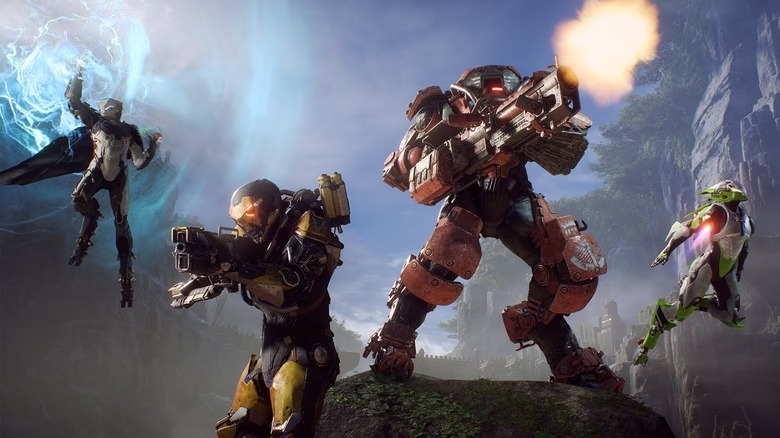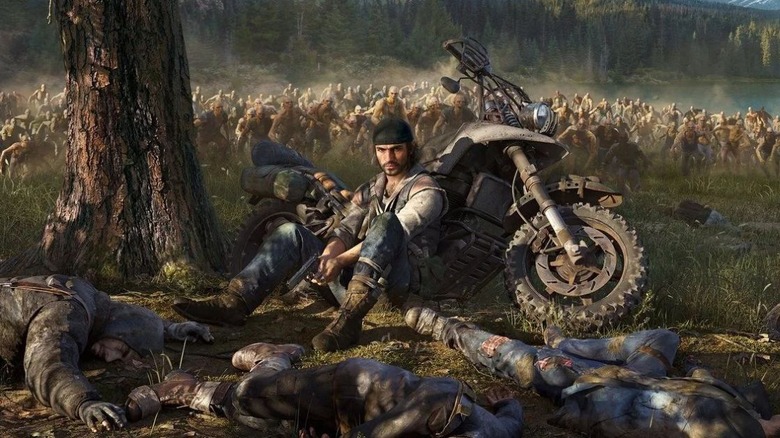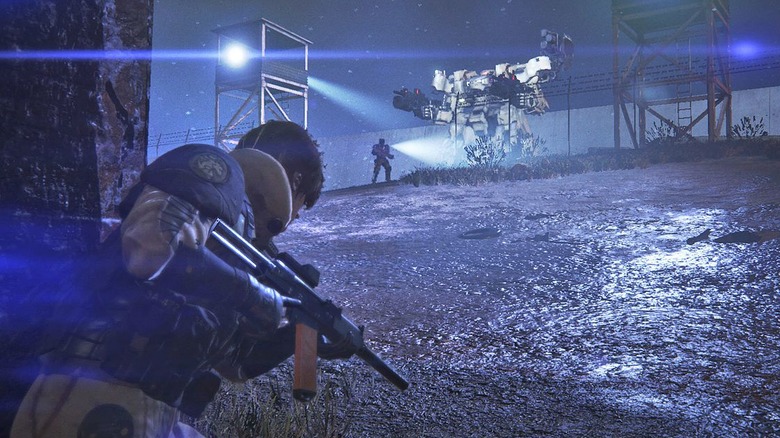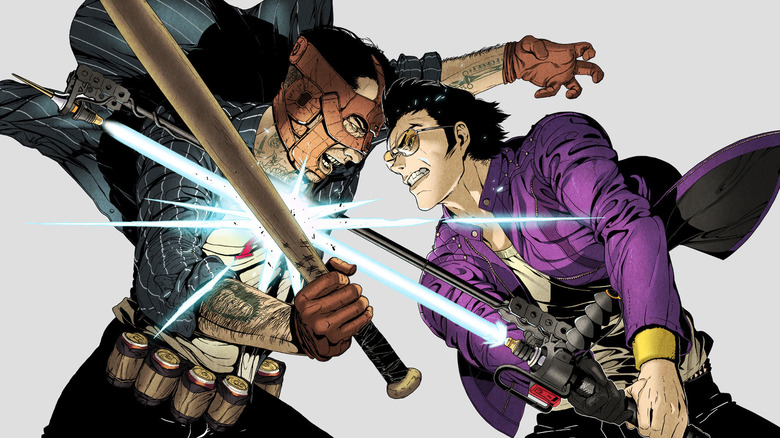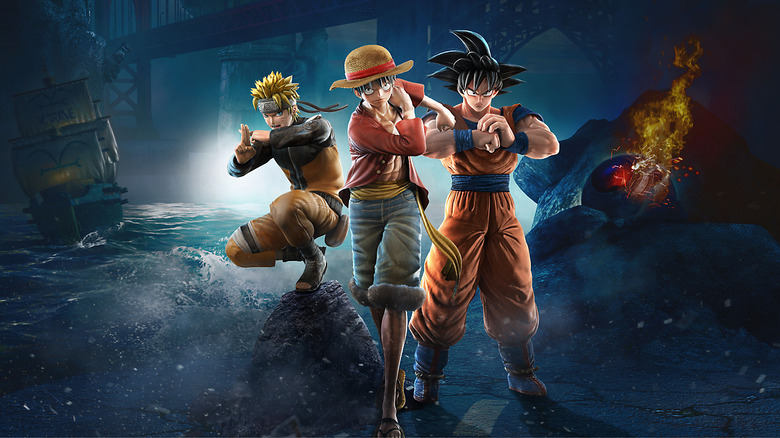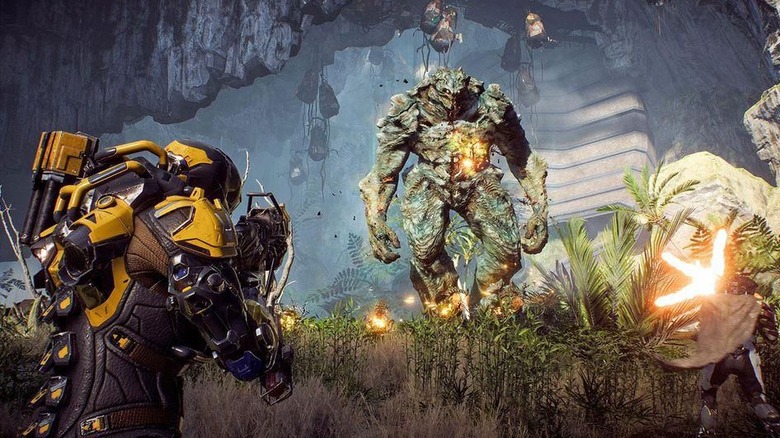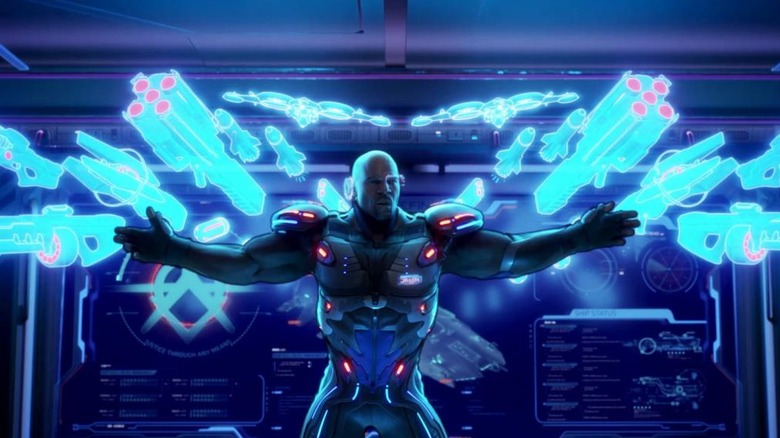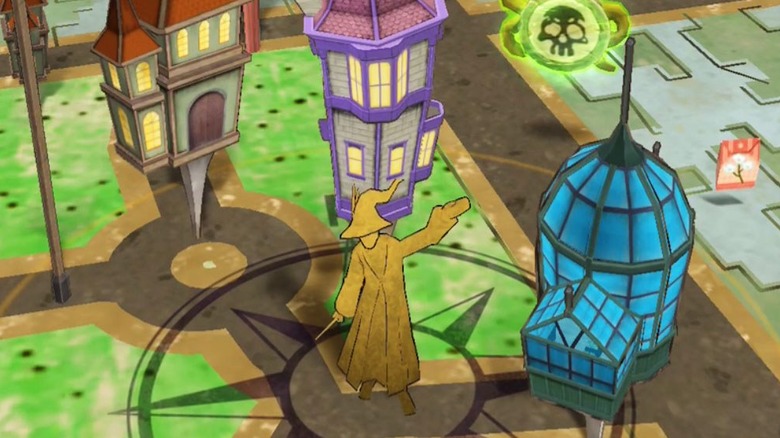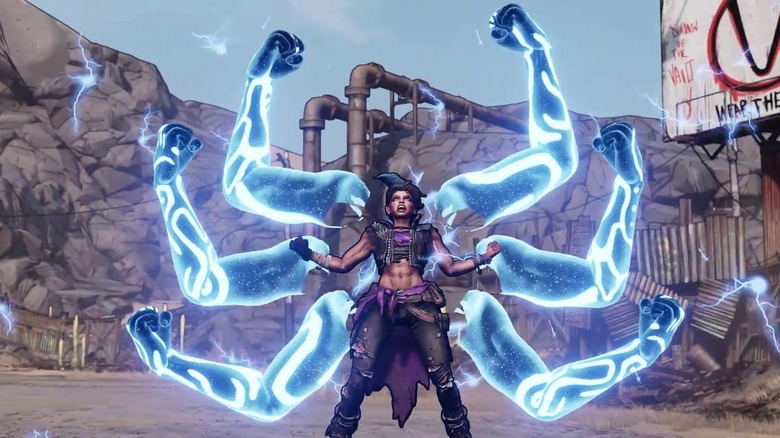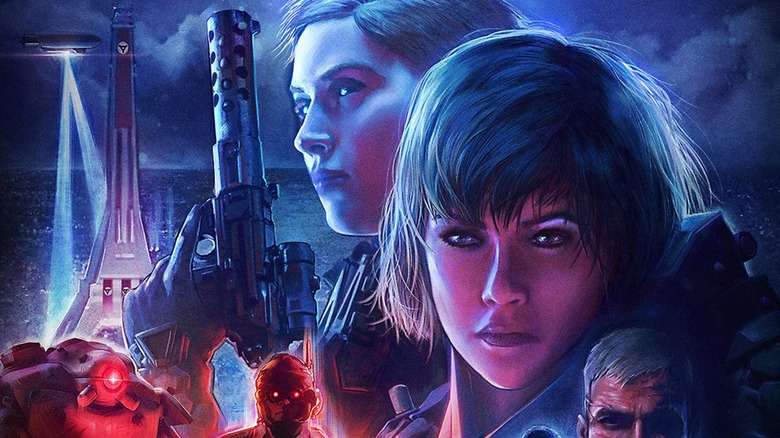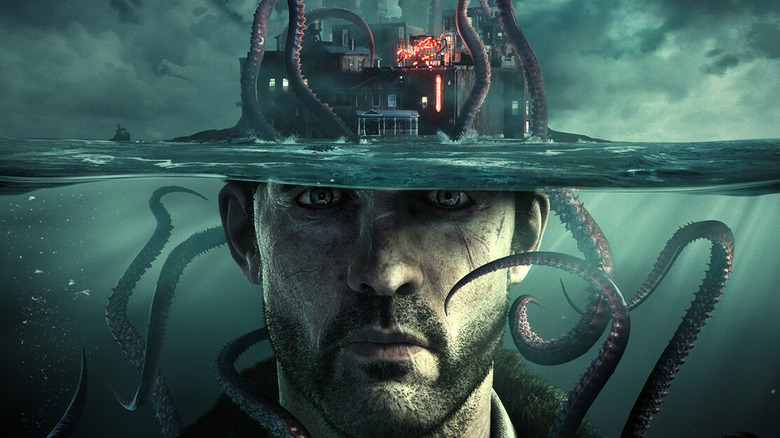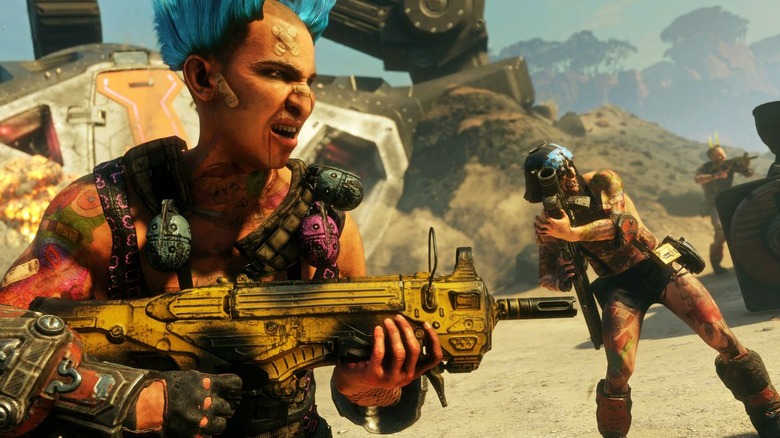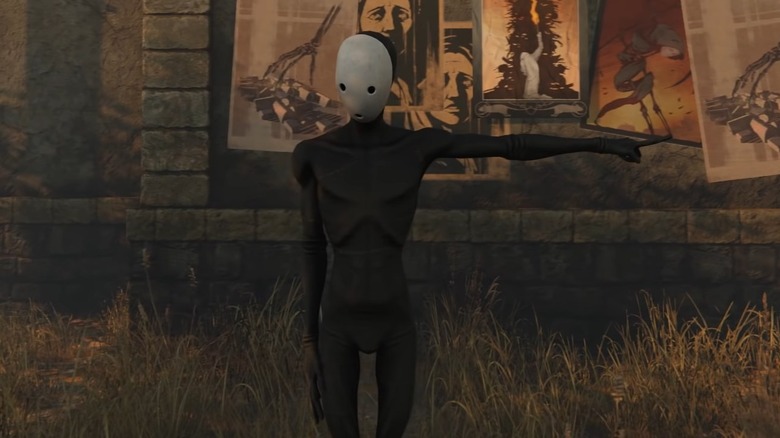The Most Overhyped Games Of 2019 That Left Us Disappointed
Video games are just like big blockbuster films: everyone hopes that the final product is just as shiny and revelatory as the impressive trailers. This can backfire occasionally, for a few different reasons.
Sometimes the released game is simply badly made, but glossy advertising has built up an excited fanbase that will inevitably be disappointed. Other times, if it's a long-awaited sequel or a tie-in to a franchise that has a lot of love and a built-in audience, it can still be seen as lacking when it turns out to be "just okay."
That's something to keep in mind as we dive into the titles that let us down in 2019: just like a movie doesn't have to win an Oscar to be considered good, a game doesn't necessarily have to be bad to be considered disappointing.
Days Gone more or less stayed gone
Days Gone seemed to have everything going for it. As a PlayStation-exclusive title, it certainly had a lot riding on its success. The promotional materials were extremely exciting, promising a AAA action experience that looked like The Walking Dead meets Sons of Anarchy. Gamers were right to be excited about roaming a large open world on a motorcycle, dispatching the not-undead in creative ways.
Digital Trends said in their review, "It's a confounding experience. Not only does it refrain from bringing any new ideas to the table, but the execution of its well-trodden features and mechanics is often below average." In addition, the many areas of the game's open world tend to blend together into a series of forests and bland back roads, while the unsatisfying survival mechanics get in the way of gunplay that is likewise undercooked.
That being said, the game does still have its fans, with Rue Morgue making a good argument that the game has a decent story and solid acting; the experience just gets bogged down by some unfortunate bugs and unexciting designs.
Left Alive was dead on arrival
Left Alive had a lot going for it. Being a spinoff from the Front Mission series of strategy games, it already had a fanbase who were interested to see how this game's more stealth combat-based approach set itself apart from the main series. Further excitement came from the fact that Left Alive featured artwork and character designs from acclaimed Metal Gear Solid artist Yoji Shinkawa.
When the game was released in Japan, however, something seemed amiss. Within a week of its launch, players were blocked entirely from streaming the game, which quickly found itself marked down in price on Amazon Japan. This was probably our first real hint towards the game's quality, but players in the United States learned soon enough that Left Alive was dead on arrival.
The game was slammed for its stiff controls and an absurdly steep difficulty curve, which mostly came from players struggling with said controls. This all led to Kotaku calling Left Alive "a clunky disaster whose good ideas are undercut by horrible gameplay."
Travis Strikes Again: No More Heroes struck out
Travis Strikes Again: No More Heroes was meant to be a side-story in the No More Heroes series, a way to tide fans over until the true third installment in the main series came out. Still, considering it was the first No More Heroes game in nearly decade, there was quite a bit of excitement built up for this one. Unfortunately, Travis Strikes Again just doesn't feel like the series that fans know and love, both in tone and gameplay style.
In addition to the confusing and muddled plot, the game was criticized as being a repetitive slog, slashing through wave after wave of interchangeable enemies until the end. There were also critiques leveled at the game's length, which seemed to be artificially padded in some ways. Kotaku said, "The levels go on for twice as long as they need to, just repeating elements for no discernable reason except, perhaps, to turn a short game into a medium-length one."
Jump Force missed the landing
Forget Avengers: Endgame: the most ambitious crossover event of 2019 looked to be Jump Force. Bringing together an all-star cast of anime and manga characters beloved the world over — including Goku from Dragon Ball Z and Monkey D. Luffy from One Piece — and pitting them against each other in a battle for the fate of the multiverse? Where do we sign up?
Sadly, Jump Force failed to live up to those lofty expectations. Polygon's review described the game's combat as "clunky due to the lack of dedicated combos ... even these basic ideas and systems fail to work as they should." Most of the game can be won with simple and mindless button-mashing, which is basically unacceptable when we already have the fantastic Dragon Ball FighterZ to show us how a game like this can be done. Even Jump Force's story mode, which should probably be the biggest draw for a crossover like this, was so bad that Bandai Namco released a patch to finally allow players to skip their cutscenes.
Anthem fell victim to its own hype
Anthem was meant to be BioWare's answer to the "games as a service" business model, a sprawling, spacebound RPG that united players against cosmic forces beyond our imaginations, with plans to continue the story with regular content updates and new missions. The reasons for Anthem's failure are numerous. Chief among them are its frustrating loot system that has alternately been stingy, then forgiving, and then grind-y again, depending on whatever update has just been released. There's also the game's uninspired story, which cribs from pretty much every sci-fi action game that's come before it, and which is told through a series of repetitive missions that seem to drag on and blend into one another.
While the game looks beautiful, the problems people had with it were fairly universal, with PC Gamer calling it "a derivative, buggy, and at times exasperatingly soulless world that fails to weave BioWare's unique storytelling with a co-op RPG shooter." The issues were so many that BioWare abandoned its planned roadmap of future story content for Anthem in favor of releasing seasonal updates to fix the broken game that was released.
Crackdown 3 felt like an artifact
To be fair, there's one major thing to like about Crackdown 3: the game's lead actor, Terry Crews, gives an enjoyably over the top performance, acting like many of us would if we found ourselves gifted with incredible new abilities. His presence makes the fact that Crackdown 3 is a collection of dated mechanics and story beats a little more palatable.
At the end of the day, the franchise simply didn't evolve in the years between installments, resulting in a game that is entertaining enough, but feels like it belongs to a different, less advanced era of open world gaming. While discussing Crackdown 3's lack of a cohesive storyline and weak co-op mechanics, Mashable's review hit the nail on the head when they said, "[The first entry] got away with being a shallow game where it just felt fun to move around the world. Crackdown 2 essentially copied that approach a few years later and it fell flat ... [Crackdown 3 is] still the same damn thing." It makes you wish Crackdown 3's many delays had led to the game becoming something a little more substantial.
Harry Potter: Wizards Unite failed to capture the magic
Harry Potter: Wizards Unite is essentially a Wizarding World spin on the Pokemon Go formula, which means it really should be a bigger and better deal than it turned out to be. Unfortunately, aside from the spellcasting mechanics that take advantage of the touch-screen aspect of mobile gaming, the gameplay itself feels very "been there, done that." It's also unfortunate that these spells cost energy points that run out almost immediately, often requiring players to either find a location to gather more energy (which only give you a few at time) or to cough up some cash in order to replenish their power.
It has also been observed that Wizards Unite is extremely front-loaded in terms of both lore from the book series and the many tasks it gives players right away. As noted by Hypable, "Casual fans or those unfamiliar with the Potter canon might find themselves dissuaded by the deluge of content thrown in their faces right from the get-go."
Borderlands 3 was good, but overhyped
Don't worry; we're not about to argue that Borderlands 3 is a bad game. It's certainly not a weak game in terms of gameplay and the ways that it expanded on the beloved franchise's core tenets of shoot, loot, and repeat. Heck, there's even a gun that shoots out other guns, which is basically every Vault Hunter's dream.
While Borderlands 3 does have a few issues when it comes to gameplay (mainly in some of the cheaper boss battles) the game's biggest problems come from its story, which relies heavily on coincidences and dropped subplots to essentially race to its conclusion. The cliffhanger endings of both Tales from the Borderlands and The Pre-Sequel are essentially ignored and never resolved.
As Forbes explained, "For every dramatic moment that has impact, another one lacks weight. For every joke that lands, there are five that miss." In other words, Borderlands 3 is a solid game. It just feels very inconsistent in the writing and storytelling department.
Wolfenstein: Youngblood didn't measure up to its predecessors
There were a lot of reasons to be excited for Wolfenstein: Youngblood. The focus on a new set of characters — in this case, the twin daughters of usual series protagonist B.J. Blazcowisz — provided an opportunity for the series to embrace new storytelling opportunities, and the co-op gameplay looked to be the kind of thing to give shooter game fans the kind of chaotic energy that they craved.
While the series' trademark gallows humor was still present in the latest entry, the story is something of a mishmash of poorly paced character development and predictable twists. While applauding the fun that can be had when playing the game with a partner, GamesRadar+ took Youngblood to task in their review for its awkward mission structures, weak stealth segments, and unimpressive AI in solo play. This one is a bit of a surprise, because it has to take some serious missteps to make a game about blasting Nazis with huge science-fiction weapons fail as a cathartic and entertaining experience.
The Sinking City simply sank
The first cinematic trailer for The Sinking City was a mind-bending, time-altering epic that got fans of Lovecraftian fiction very excited for a deep dive into the Cthulhu mythos. The Sinking City follows a private detective named Charles Reed as he solves multiple mysteries and explores the hidden history behind the eerie fishing town of Oakmont. The fact that this game came from Frogwares, the folks behind the successful and long-running Sherlock Holmes series of games, meant this could have been a solid supernatural mystery thriller.
While the game's narrative and puzzle-solving elements have been decently received, most reviewers tend to agree that the gameplay and visuals don't quite match up with The Sinking City's ambitious storytelling. Eurogamer said, "The animation quality in The Sinking City simply isn't good enough to support combat ... Controlling your character feels like moving through molasses." When danger lurks around every corner, it's simply frustrating to be unable to effectively ward off said danger.
Rage 2 was more like AveRAGE 2
While the original Rage wasn't necessarily anything to write home about, delivering a Quake-esque post-apocalyptic shooter that was simply "fine," the marketing for Rage 2 seemed to promise more of an over the top, neon-drenched Mad Max-esque action romp. This was especially intriguing, given that Rage 2 developers Avalanche Studios had previously made 2015's underrated Mad Max game.
While the game's shooting mechanics were highly praised, Rage 2 failed to satisfy in just about every other department, featuring a bare bones storyline and relatively pointless microtransactions for cosmetic skins and items than can be found elsewhere in the game. Metro took Rage 2 to task for its "terrible use of the open world environment, with banal, repetitive missions and an overly short campaign." In other words, this was an okay game that tried to improve upon its predecessor, but ended up feeling like an awkward holdover from an earlier generation of open-world gaming.
Pathologic 2 got more hype than it deserved
The first Pathologic was a bit of a mess, but its mishmash of interesting ideas and unique designs made that game into a bit of a cult classic. Therefore, when Pathologic 2 arrived over a decade later, there was quite a bit of hope that this installment would iron out the kinks of the first game. Unfortunately, this Kickstarter-backed follow-up was a bit too devoted to the game that spawned it, arriving with many of the same problems.
In essence, it's a game full of brilliant concepts that gets bogged down by shoddy execution. Rock Paper Shotgun lauded the game's atmosphere and setting, as well as the haunting musical score, but found the rest of the game too difficult and buggy to recommend. Pathologic 2 seemed to believe that "more is better" when it comes to survival mechanics, so your character's progression through the story is frequently halted so that you can scrounge up more supplies to placate one of six different meters that measure your health and stamina. The result is an interesting game that is frequently not fun at all to play.

